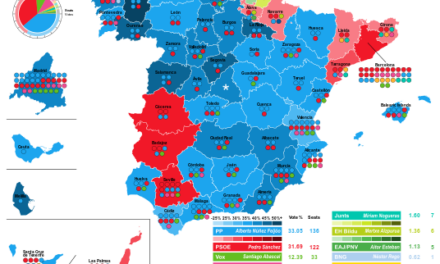 The Canary Islands have been confirmed, as of April, to be leading the Spanish tourism recovery with international passenger volumes comparable with pre-pandemic levels in 2019, with a total of 1.1 million, representing 15.9% of national market share throughout Spain, according to data released this Wednesday by the national tourism board, Turespaña. The Canary Islands are, not only, still the favourite destination in Spain for UK tourists, but they are also the fastest growing destination for international visitors, leading Spain’s tourism recovery.
The Canary Islands have been confirmed, as of April, to be leading the Spanish tourism recovery with international passenger volumes comparable with pre-pandemic levels in 2019, with a total of 1.1 million, representing 15.9% of national market share throughout Spain, according to data released this Wednesday by the national tourism board, Turespaña. The Canary Islands are, not only, still the favourite destination in Spain for UK tourists, but they are also the fastest growing destination for international visitors, leading Spain’s tourism recovery.
Accumulated volume for the first four months of 2022, however, remains 17% below pre-pandemic figures, to total four million international tourists to the region thus far this year.
Up to the end of April, Spain has seen a total of 18.72 million passengers arriving from international airports, understandably representing a 658.5% increase over the same period last year (2021), still 26.1% down on 2019, according to the latest available data.
Compared with 2019, here on the islands, Tenerife Sur airport had the most promising indicators this April receiving 429,146 tourists, indicating an increase of 4.1% over prepandmic figures, followed by Fuerteventura (+0.1%), with 172,824 passengers; Lanzarote is still sporting a slight decrease (-0.7%), with 216,328 and Gran Canaria has seen a drop of 2.5% since April 2019, with 282,495 visitors from international airports during the fourth month of this year.
 For Spain as a whole, low-cost airlines led international passenger traffic in April, representing 57.4% of all travel. 6.9 million visitors, an increase of 755.1% over the same month of 2021, represents just 14.4% less than in 2019, approaching pre-pandemic volumes. Just over 60% of international tourists now book with low-cost tour operators.
For Spain as a whole, low-cost airlines led international passenger traffic in April, representing 57.4% of all travel. 6.9 million visitors, an increase of 755.1% over the same month of 2021, represents just 14.4% less than in 2019, approaching pre-pandemic volumes. Just over 60% of international tourists now book with low-cost tour operators.
Throughout April, 58.4% of tourists came to Spain from within the European Union, 22.9% less than 2019, while the tourist flows from the rest of the world, the remaining 41.6%, remained -30.1% down compared to 2019.
Spain’s Minister for Industry, Commerce and Tourism , Reyes Maroto, said in a statement “The good Easter campaign … has propelled a degree of recovery of tourist flows in the month of April, confirming a gradual growth trend that has been maintained since the beginning of the year”.
United Kingdom, Spanish tourism’s fastest growing market
According to data from Turespaña, in terms of the increase in international passengers registered in April over this last year, the main issuing countries compared to the same month in 2021, the number of visitors from the United Kingdom has grown the fastest, multiplying last year’s figures by x60 (+6,760%).
The UK also generated the highest number of arrivals to Spain in April, accumulating 23% of the total number of travellers, exceeding 1.6 million.
They were followed by Germany, with 1.12 million travellers in April, then France (597,070 passengers), Italy (596,349), the Netherlands (389,031), Belgium (264,044), Switzerland (253,465) and Portugal (213,432).
International air passengers arriving to the Canary Islands in April totalled 1,110,216, just 0.2% fewer than the same month of 2019, and this was primarily driven by travellers from the UK and Germany. Tenerife Sur and Fuerteventura airports exceeded pre-pandemic levels by 4.1% and 0.1%, respectively. While the Balearic Islands, 1,139,613 coming by air represent a recovery of 96.8% of pre-pandemic arrivals, with the German market as the main country of origin there.
The Canary Islands now show the highest levels of recovery throughout the whole of Spain, with respect to the pre-pandemic period, while Catalonia and the Valencian Community are registering the highest year-on-year growth, of 1006.3% and 962% respectively since 2021.














